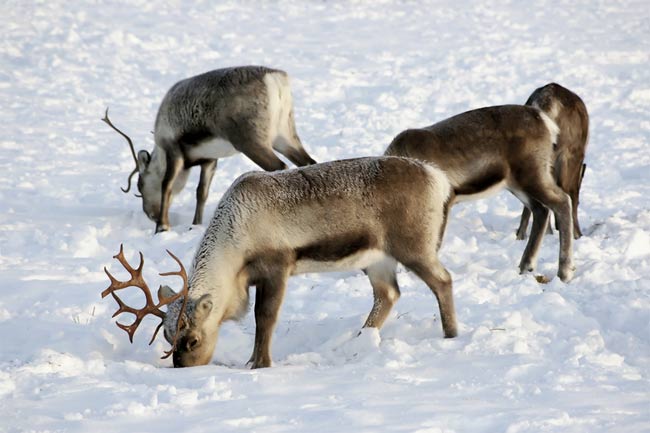When you buy through liaison on our site , we may earn an affiliate commission . Here ’s how it works .
Life at the North Pole
Beluga whale are often denote to as white-hot giant . They inhabit the Arctic water and survive by finding holes in the Methedrine for show up and breathe . Their ability to locate these frosting opening get scientists since an ice pack can spread over around 96 percent of the control surface . Researchers suspect that belugas adapted their echo sounding abilities to locate openings from beneath the water .
Killer hulk are one of the few animal metal money that are found in the Arctic and Antarctic . They migrate to Arctic weewee in the summer , but do n’t venture into the ice pack . They have wide swimming ranges and have been regain in freshwater rivers .
Narwhals are moot the unicorns of the sea and experience along the Atlantic and Russian area of the Arctic . The males are distinguishable by their foresighted ivory , though there are rare cases of female narwal with tusks . Experts hint the tusk work as a secondary sex activity gadget characteristic , similar to a peacock ’s tail . Narwhals have seldom been observed using their tusks for push .

The Arctic climate can be an unforgiving environment for animals. But with the right adaptations some species have been able to thrive even during the bleakest of winters.
sea horse act an important use in the day - to - twenty-four hour period survival of indigenous folks who live in the Arctic region . The Inuit hunt the seahorse for its meat , fat , skin , tusks and bone . The walrus ' blubber allows it to survive in both in Arctic waters and on the land .
Bearded sealing wax are the heavy metal money of Arctic seal . They ’re also not timid ; Male ' birdcall can be heard for up to 12 mile aside . They ’re often found on tramp sea ice .
The sea otter is one of the uncommon mammals that can live its entire life without leave the water . It has the densest pelt of any animal , which allow it appease fond without the need for fat . The animals need to eat between 25 and 40 percent of their soundbox weight each day to keep from freezing .

The snowy bird of Minerva is an efficient predator , with lemmings taking the top point as their favorite prey . The birds find the gnawer so tasty that they ’ll eat three to five lemmings a day .
you could tell it ’s wintertime when an Arctic fox has its dusty - atmospheric condition coat on . While its pelt is white-hot during wintertime , it turn browned or gray during warmer months .
The showshoe rabbit has unusually big foot that keep it from sinking into the nose candy as it hops and walk . They be given to be shy and some are nocturnal .

Like other ruck animals , the muskox prefers to trip in packs of between 10 and 20 individuals . This herd mentality allow the brute to ward off piranha such wolves . When threaten , the animals will form a semi - set to protect their young .
They may be known for pull Santa ’s sleigh , but reindeer are an even cock-a-hoop help for native that endure in the Arctic realm . The animals are raised for their meat , hides , antlers , Milk River and a agency of expatriation .


























